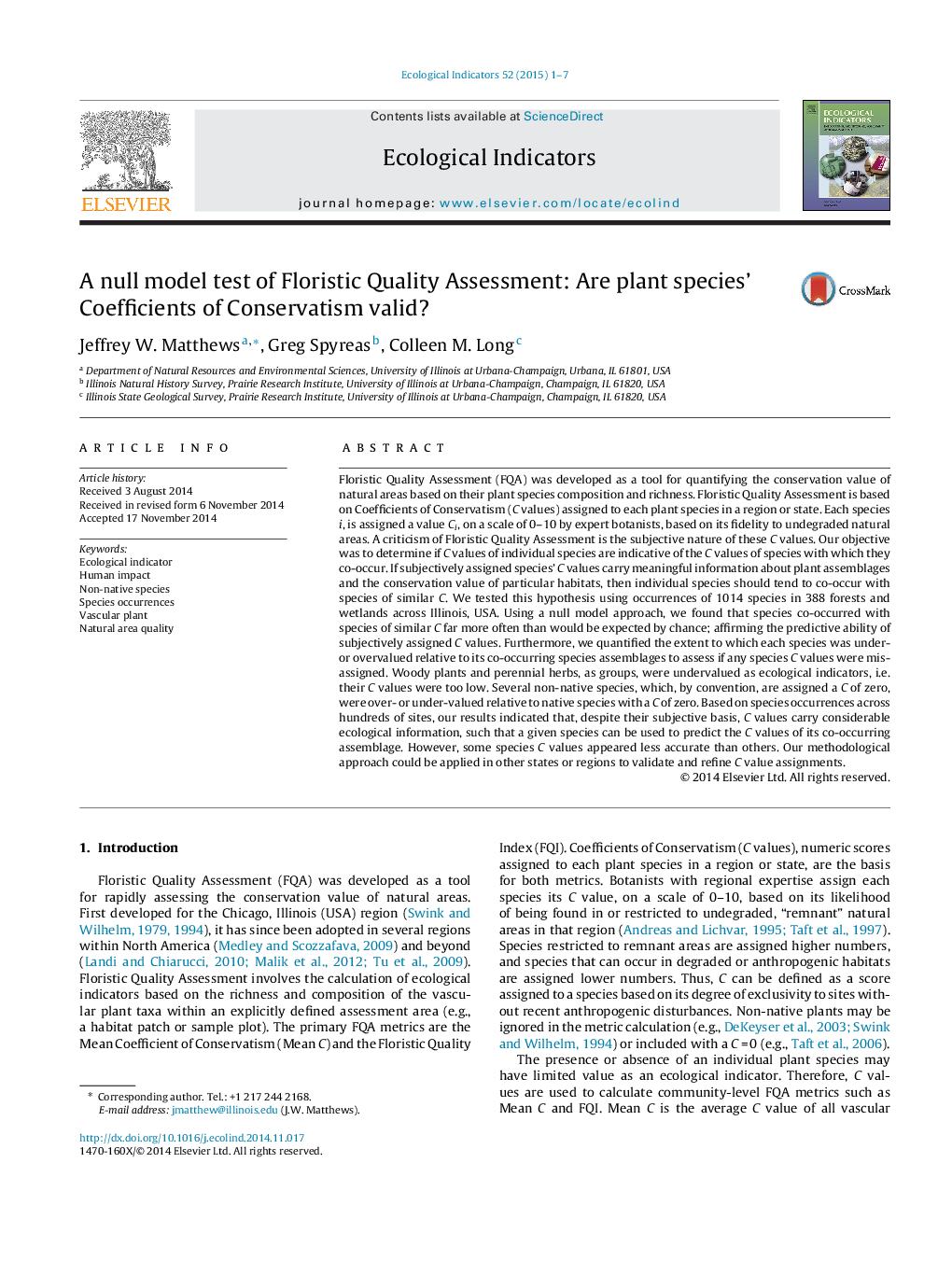| Article ID | Journal | Published Year | Pages | File Type |
|---|---|---|---|---|
| 6294494 | Ecological Indicators | 2015 | 7 Pages |
Abstract
Floristic Quality Assessment (FQA) was developed as a tool for quantifying the conservation value of natural areas based on their plant species composition and richness. Floristic Quality Assessment is based on Coefficients of Conservatism (C values) assigned to each plant species in a region or state. Each species i, is assigned a value Ci, on a scale of 0-10 by expert botanists, based on its fidelity to undegraded natural areas. A criticism of Floristic Quality Assessment is the subjective nature of these C values. Our objective was to determine if C values of individual species are indicative of the C values of species with which they co-occur. If subjectively assigned species' C values carry meaningful information about plant assemblages and the conservation value of particular habitats, then individual species should tend to co-occur with species of similar C. We tested this hypothesis using occurrences of 1014 species in 388 forests and wetlands across Illinois, USA. Using a null model approach, we found that species co-occurred with species of similar C far more often than would be expected by chance; affirming the predictive ability of subjectively assigned C values. Furthermore, we quantified the extent to which each species was under- or overvalued relative to its co-occurring species assemblages to assess if any species C values were mis-assigned. Woody plants and perennial herbs, as groups, were undervalued as ecological indicators, i.e. their C values were too low. Several non-native species, which, by convention, are assigned a C of zero, were over- or under-valued relative to native species with a C of zero. Based on species occurrences across hundreds of sites, our results indicated that, despite their subjective basis, C values carry considerable ecological information, such that a given species can be used to predict the C values of its co-occurring assemblage. However, some species C values appeared less accurate than others. Our methodological approach could be applied in other states or regions to validate and refine C value assignments.
Related Topics
Life Sciences
Agricultural and Biological Sciences
Ecology, Evolution, Behavior and Systematics
Authors
Jeffrey W. Matthews, Greg Spyreas, Colleen M. Long,
